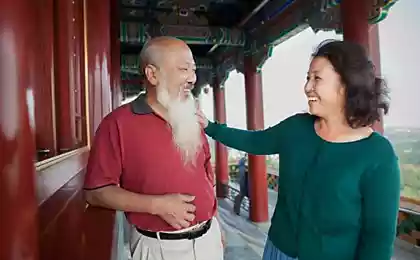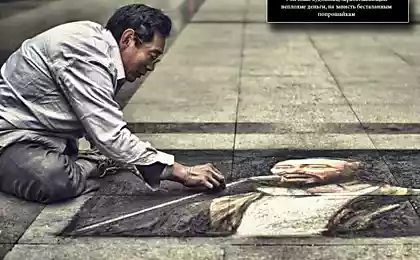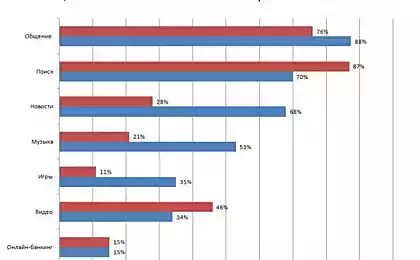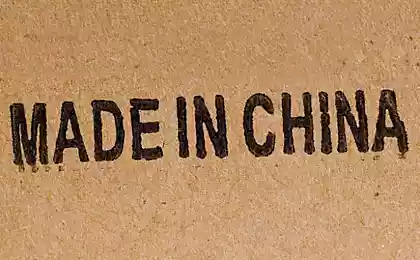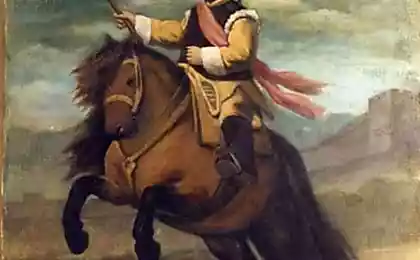703
The life of a driver in China
Actually, the eye caught a couple of the motorists about the problems in our countries, and I thought, why not tell us about their lives in another country, such as China ...
End outline the

How to start a life of the driver? That's right, with a driving license. In any case, the procedure shall paint (who suddenly needed):
1) makes the translation of passports and driving licenses of the country (about 200 yuan)
2) pass a medical examination in the SAI (10 yuan)
3) to collect documents (passport and visa + copy + transfer rights + copy + transfer, medical examination form, registration with the police), go to the traffic police
4) On the appointed day, we are at the center of the exams. There we met a bunch of machines (from the motorcycle and to buses) where today people will ride and take practice (trucks on the other side and frame not included)
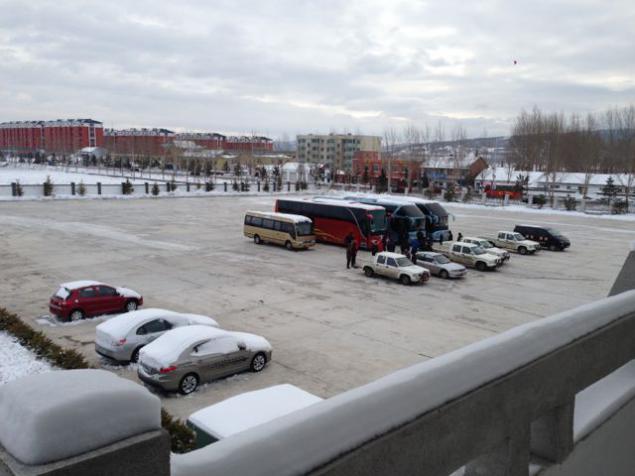
We call on the groups, and we are going to take the theory. In total 100 questions, it is necessary to correctly answer at least 90. For those who ever gave such an examination, the complexity is not a make - signs identical to 90% of the traffic controller signals and traffic signals - too. In any case, I was preparing for 机动车 驾驶 人 科目 一 考试 题库 (compilation of the questions for the examinations of drivers), the publisher of the local provincial 交警 支队.
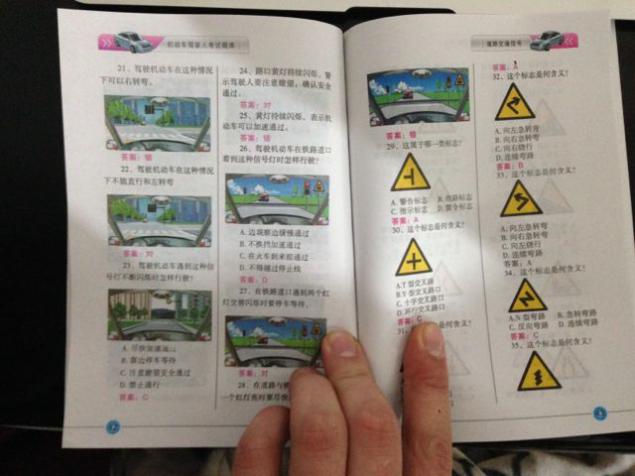
The examination room looks absolutely normally - 20 computers on which you answer the test questions

Then we are waiting for the practice. A winding path with lots of signs in front of each of which is necessary to perform the appropriate action (to sign "Give way" - slow down and look around before the sign "Caution Children" - slow down. There is also a bus stop points unloading goods on that checks of those who donate to the corresponding category. I rent to C1 (passenger cars without a trailer), so I do not care.

When it's over (I passed the second time), we leave the road. All the roads here are divided into 4 classes. The first and most luxurious - this 国 道 (state road). Designated by the letter G (eg G109), and green, they are almost always speed. In this regard, China can be compared only to the US (the quality of the road surface, ease of movement of the vehicle, etc.). Compare it with Germany, France, where the road is also good - it is incorrect, for the whole of Germany as the area is not the biggest Chinese province.

But, as elsewhere, for the quality you have to pay (there is also a complete parity with the states). Depending on the province, a kilometer travel on the highway will cost about 1 yuan, crossing the middle of the bridge - about 30 million yuan. Ie budget travel 1,000 kilometers overfill additional 1,200 yuan on toll roads.
The Chinese have this terribly unhappy, the Internet is full of cartoons (收费 站 - paragraph fare). But, sometimes, on public holidays, all roads are declared free.

But, in fact, not so sad. If you have a car with local number, for travel on local roads, you will be a discount or even for free. Of course, travel is free for buses, public transport, local taxi (only within the city), military vehicles, firefighters, etc. So, do not go outside of the province, to spend very many you will not.
The next level of the road - 省道 (provincial road - a province in China - a unit of administrative division). Represented in blue and the letter S (eg, S105)

The next level of the road - 县 道 (county road). Represented by white color and the letter X (eg, X218). On this photo pointers to all the above three types of roads - we are on the provincial road S203, exit right on the state road and county road G92 X331.

This is how looks the typical county road (photo not mine)

Well, the last type of roads - 乡 道 (local road). It may be the road from the county road to a village, etc. Naturally, each of these types of roads a high-speed mode, its rules, but the overall impression is simply gorgeous. Conclusion - to travel to China on the car between the cities are very, very comfortable.

Below you can see pictures on the previous designation of a local road - the letter Y and number.
But travel by car to Chinese cities - a task not for the faint of heart. Pile rickshaws, scooters, messy chaotic stream of cars, etc ...
I have already got used, but let me behind the wheel somewhere in another country do not recommend - I shall reach only to the first crossroads
Now the bad news. The penalty system here is organized as follows - for each violation awarded penalty points. The maximum number of points - 12, of which should be set after the withdrawal of the rights and re-examination or re-examination on the deprivation of the right to a certain period of time (up to life in prison).
On the table shows, for which 1 point (for example, misuse of beam), 3 points (eg for parking in eshehodnom transition), 6 points (for example, leaving the opposite lane) and 12 points (for example, for excess speed limit by more than 50% control of the vehicle while intoxicated).
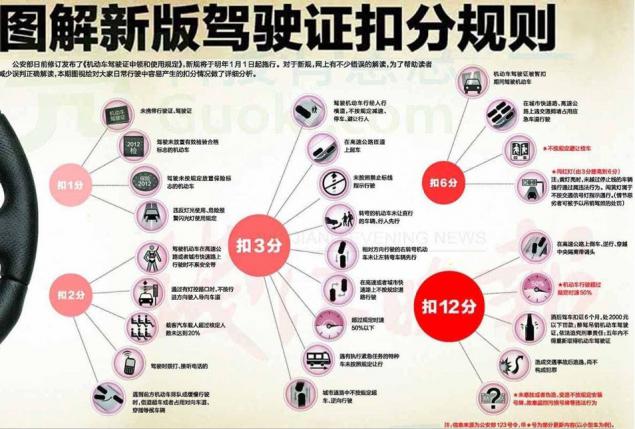
But despite the very tough measures are wanted to spit on the SDA, so the flow pereekzamenuyuschihsya in the center of the exams does not dry out

Well, finally - the price of gasoline.
90th gasoline - 6.8 yuan per liter
93rd - 7.15
97th - 7.78
DT - 6.99
Information from the official site nearly monopolist 中国 石油 (photo for illustration only).
As you can see, the possession of machine in China - not a cheap pleasure.
End.
There will be questions - address.
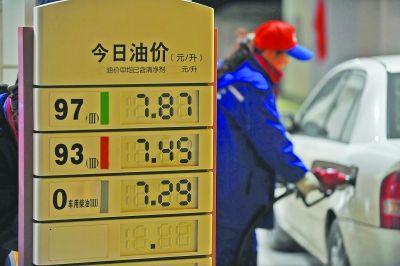
Source:
End outline the

How to start a life of the driver? That's right, with a driving license. In any case, the procedure shall paint (who suddenly needed):
1) makes the translation of passports and driving licenses of the country (about 200 yuan)
2) pass a medical examination in the SAI (10 yuan)
3) to collect documents (passport and visa + copy + transfer rights + copy + transfer, medical examination form, registration with the police), go to the traffic police
4) On the appointed day, we are at the center of the exams. There we met a bunch of machines (from the motorcycle and to buses) where today people will ride and take practice (trucks on the other side and frame not included)

We call on the groups, and we are going to take the theory. In total 100 questions, it is necessary to correctly answer at least 90. For those who ever gave such an examination, the complexity is not a make - signs identical to 90% of the traffic controller signals and traffic signals - too. In any case, I was preparing for 机动车 驾驶 人 科目 一 考试 题库 (compilation of the questions for the examinations of drivers), the publisher of the local provincial 交警 支队.

The examination room looks absolutely normally - 20 computers on which you answer the test questions

Then we are waiting for the practice. A winding path with lots of signs in front of each of which is necessary to perform the appropriate action (to sign "Give way" - slow down and look around before the sign "Caution Children" - slow down. There is also a bus stop points unloading goods on that checks of those who donate to the corresponding category. I rent to C1 (passenger cars without a trailer), so I do not care.

When it's over (I passed the second time), we leave the road. All the roads here are divided into 4 classes. The first and most luxurious - this 国 道 (state road). Designated by the letter G (eg G109), and green, they are almost always speed. In this regard, China can be compared only to the US (the quality of the road surface, ease of movement of the vehicle, etc.). Compare it with Germany, France, where the road is also good - it is incorrect, for the whole of Germany as the area is not the biggest Chinese province.

But, as elsewhere, for the quality you have to pay (there is also a complete parity with the states). Depending on the province, a kilometer travel on the highway will cost about 1 yuan, crossing the middle of the bridge - about 30 million yuan. Ie budget travel 1,000 kilometers overfill additional 1,200 yuan on toll roads.
The Chinese have this terribly unhappy, the Internet is full of cartoons (收费 站 - paragraph fare). But, sometimes, on public holidays, all roads are declared free.

But, in fact, not so sad. If you have a car with local number, for travel on local roads, you will be a discount or even for free. Of course, travel is free for buses, public transport, local taxi (only within the city), military vehicles, firefighters, etc. So, do not go outside of the province, to spend very many you will not.
The next level of the road - 省道 (provincial road - a province in China - a unit of administrative division). Represented in blue and the letter S (eg, S105)

The next level of the road - 县 道 (county road). Represented by white color and the letter X (eg, X218). On this photo pointers to all the above three types of roads - we are on the provincial road S203, exit right on the state road and county road G92 X331.

This is how looks the typical county road (photo not mine)

Well, the last type of roads - 乡 道 (local road). It may be the road from the county road to a village, etc. Naturally, each of these types of roads a high-speed mode, its rules, but the overall impression is simply gorgeous. Conclusion - to travel to China on the car between the cities are very, very comfortable.

Below you can see pictures on the previous designation of a local road - the letter Y and number.
But travel by car to Chinese cities - a task not for the faint of heart. Pile rickshaws, scooters, messy chaotic stream of cars, etc ...
I have already got used, but let me behind the wheel somewhere in another country do not recommend - I shall reach only to the first crossroads
Now the bad news. The penalty system here is organized as follows - for each violation awarded penalty points. The maximum number of points - 12, of which should be set after the withdrawal of the rights and re-examination or re-examination on the deprivation of the right to a certain period of time (up to life in prison).
On the table shows, for which 1 point (for example, misuse of beam), 3 points (eg for parking in eshehodnom transition), 6 points (for example, leaving the opposite lane) and 12 points (for example, for excess speed limit by more than 50% control of the vehicle while intoxicated).

But despite the very tough measures are wanted to spit on the SDA, so the flow pereekzamenuyuschihsya in the center of the exams does not dry out

Well, finally - the price of gasoline.
90th gasoline - 6.8 yuan per liter
93rd - 7.15
97th - 7.78
DT - 6.99
Information from the official site nearly monopolist 中国 石油 (photo for illustration only).
As you can see, the possession of machine in China - not a cheap pleasure.
End.
There will be questions - address.

Source:



